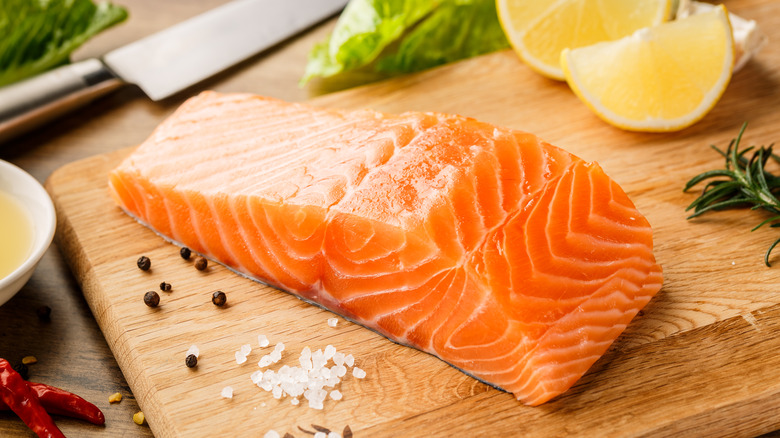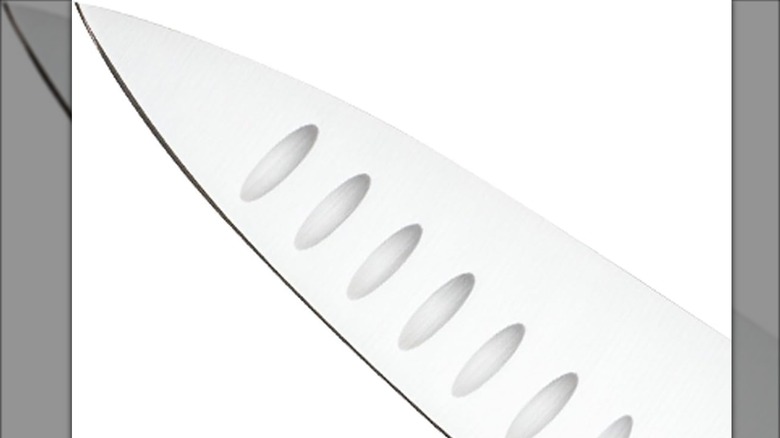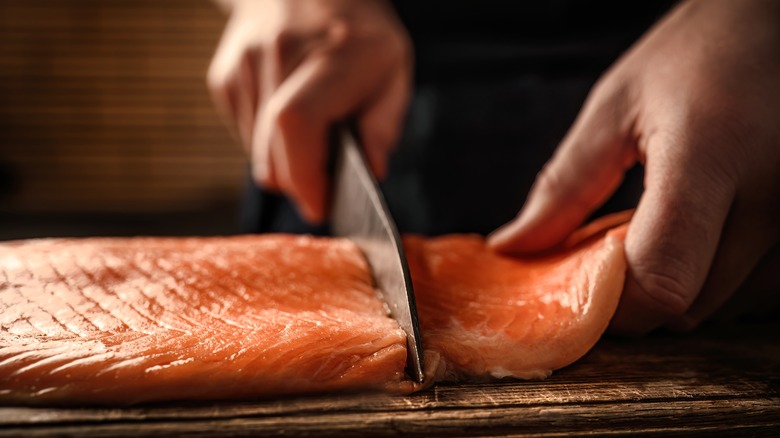Why A Granton Edge Knife Is Ideal For Cutting Raw Salmon
Salmon is a hearty yet delicate fish that requires a bit of precision in the way of chopping and slicing. The last thing you want is to turn what was supposed to be salmon sashimi into salmon mush instead. Getting the right tool for the job is half the battle when it comes to getting the perfect slice, and you can't go wrong with using a Granton Edge knife to cut into your salmon.
For your salmon cutlery, you want a knife that's both sharp and flexible, and Granton Edge knives satisfy both criteria well enough. What separates Granton Edge from other knives, besides brand loyalty, is the scallop indentations along the edge of the blade. Extending to the center of the blade, these scallop indentations magnify the sharpness of the edge of the knife. The sharpness of the blade makes it extremely versatile, able to chop tougher affairs like beetroots but also meats like ham or salmon. In particular, Granton Edge knives are great for cutting moist, juicier foods like fish, thanks to their unique design.
The scallop indentations on a Granton Edge knife create air pockets between the knife and the meat, which help you avoid one of the dreaded pitfalls of cutting salmon — accidentally shredding it. These air pockets prevent the meat of the fish from sticking to the knife, allowing for an effortless slice. You don't have to worry about the fish adhering to your blade and potentially ruining all of your hard work.
Use the Granton Edge knife to make these dishes
There are countless salmon recipes that you can make using a Granton Edge knife. As mentioned above, the cutlery can be used to slice your fish for salmon sashimi. The hallmarks of sashimi are thinly sliced pieces of meat, often served with wasabi, ginger, or soy sauce. Likewise, sushi also incorporates delicately thin pieces of fish, calling for a precise touch when it comes to slicing. When prepping your salmon for sushi, you should slice your fish at a 45-degree angle with the Granton Edge knife. Using the knife should allow for one swift motion rather than trying to saw your fish like it's lumber.
Of course, it's not just Asian cuisine that will benefit from perfectly sliced cuts of salmon. If you're making salmon risotto, you will want thin slices of salmon to top your dish. The salmon adds flavor and character to the dish. However, if your fish slices end up too thick, then you risk overwhelming the subtle nuances of your risotto, leaving you with a dish that tastes fishy and little else. Even when cooking dishes that don't require such a fine shave of salmon, the texture of the fish is still important. When using a Granton Edge knife, you don't have to worry about accidentally destroying the exterior of your salmon. For dishes where salmon is the main star, like salmon soup or a luscious filet, the quality and texture must be just right.
Other knives to consider
When choosing the best knife to slice salmon (whether Granton Edge or otherwise), there are some important considerations to factor in. For a salmon knife, you want a precise tool able to slice thinly and thickly as needed. Salmon knives need to perform double duty — removing the scales and skin from the fish as well as deboning and slicing the salmon into fillets.
The Granton Edge has the edge over the competition (no pun intended) thanks to its hollow scallop indentations, but it's not the only knife on the market that will get the job done. For instance, the 3 Claveles salmon knife also has ridges that will prevent the fish from sticking to the knife. Using a knife with hollow enclaves will preserve the texture of your salmon.
Comparatively, a serrated knife, which has blades that resemble shark teeth, wouldn't work as well. The serrated blade is designed to saw through, rather than cleanly slice in one clean motion. Serrated blades are best for foods with thick skin or with tougher exteriors. Meanwhile, knives with plain blades can be used for slicing salmon, but you run the risk of the salmon sticking to the knife, ruining its texture. Plain blades are best used to peel vegetables and fruit. There's a reason Granton Edge knives are preferred by many home chefs for cutting up their seafood: They create a seamless experience.


